
Imagine you have taken over the leadership role in a team. You are pleased with virtually everybody you have inherited. But one person is falling short of the mark. It is now decision time.
You may need to decide whether or not to persist with the person. If you want to continue working with the person, you will need to give them some clear messages. You will also give them every opportunity to succeed.
Let’s explore one approach to going through these steps.
Clarify whether the person
has the potential to succeed
Start by clarifying what you believe somebody in this role should be delivering. Ask yourself:
What would be the actual results an ‘A’ player would be delivering in this role?
What would be the actual words that the key stakeholders – such as the leaders, colleagues, customers and others – would be saying about the performance of an ‘A’ player in this role?
The leaders might be saying, for example: “The person is proactive, sees things from the organisation’s point of view – rather than just their own – and keeps us informed.”
The colleagues might be saying: “The person is positive, make a good contribution during meetings and helps us to succeed.”
The customers might be saying: “The person shows they understand our business, provides great service and takes ownership for solving any issues we have with their organisation.”
Move on to clarifying the person’s potential. Bearing in mind the picture of success, ask yourself:
To what extent is the person delivering these results today? How would I rate them on a scale 0 – 10?
What is their potential? Do they have the right attitude and ability to achieve the required results?
Given the right coaching, what rating do I think they can achieve? Can they go beyond 7/10?
Considering your answers, then ask yourself the following questions.
Do I believe the person has the potential – the right attitude and ability – to achieve the required rating?
Do I believe the person is actually more suited to another role – inside or outside the organisation – where they can deliver better performances?
You are looking for the person to achieve at least 7+/10. Otherwise it will be extremely difficult. Based on your answers, decide whether or not you want to help the person to master the particular role.
Morality is crucial. If you want the person to move on, it is vital that you have previously given them a clear message about improving their performance. Otherwise the bad news comes out of the blue, leaving them with little chance to bridge the gaps.
If you wish, try tackling the exercise on this theme. This invites you to do the following things.
Write the name of the person to whom you may need to give a tough message.
Describe in summary what an ‘A’ player in this role would be delivering.
Describe the highest rating that you believe the person can achieve. Do this on a scale 0 – 10.
Describe the specific things they would need to do to achieve a rating of at least 7+/10 in terms of delivering these results.
Let’s imagine that you decide you want to work with the person on improving their performance. This takes us to the next step.
Make clear contracts with the person about
whether they want to deliver the required results
You may wish to go through the following stages.
Set-up a meeting and position it properly.
Contact the person. Explain that you want to talk about how they can continue to improve their performance. Say it is a session about growing into a role – it is not a ‘Goodbye’ meeting.
Don’t be afraid to say farewell to people, but there is a lot of work that can be done before such an exit.
Create a script you want to follow – including the messages you want to give the person – and rehearse the meeting.
Before the meeting, be crystal clear on:
The way you want to start the meeting and the atmosphere you want to create.
The key messages you want to give the person and how you can, if possible, put these in a positive way.
The specific things you can do to keep returning to the key messages if things get difficult.
Mentally rehearse the session. Make sure you are comfortable with knowing how to set the scene, conduct the meeting and, if appropriate, keep returning to the key messages you want to give the person.
Start the meeting by welcoming the person and explaining that you want to do a reality check.
Describe what you plan to cover in the session. Explain that you will explore what the person does well and what they can improve.
You will also share your picture of success regarding what an ‘A’ Player in their role would be delivering. You will then invite them to consider the possible options moving forward.
Explain that, while you are aiming for a positive outcome, the session won’t always be easy. Some messages may be tough to take on board. Your overall goal is, however, to get wins for both them and the organisation.
Give your picture of success about what an ‘A’ player in this role would be delivering.
Talk about the desired outcomes, because people must have something to aspire to in the future. Do not harangue them with details; otherwise it is easy to get into an argument. Give them clear messages about:
The specific results an ‘A’ player in this
role would be delivering would be:
*
*
*
The actual words that the key stakeholders – leaders, colleagues and customers
– would be saying about what an ‘A’ player would be delivering would be:
*
*
*
Invite the person to evaluate their own performance in relation to the picture of success and, if appropriate, repeat the reality check.
Invite the person to reflect for a moment. Ask them:
“On a scale 0 – 10, how would you presently rate yourself in terms of delivering the required results?
“What do you think you can do to maintain or improve the scores?”
Invite them to evaluate their own performance. Listen carefully. Ask for examples where appropriate. If it is helpful, give positive but honest feedback regarding their successes.
But there may be hard news to deliver, so communicate this by moving on to the next stage.
If appropriate, repeat again what an ‘A’ Player in their role would be delivering. If the person has rated their performance as 8/10 in a weak area, for example, you may want to say something like the following.
“Is it okay if I share some information? I am doing this in terms of a reality check. It may be a bit difficult to take on board, but that is up to you.
“I am sharing it because I want to help you to succeed. So is it okay if I share the information?”
Wait for the person to say it is okay. Why? You are making a psychological contract with them. If the person does not want to hear the tough news – or wants to argue – that is their choice.
As the old saying goes: ‘The person must have the will before they can learn the skill.’
Let’s assume the person says that they are willing to listen to the reality check. You may then want to say something along the following lines.
“Looking at the big picture, I see that in this particular area ___ you give yourself 8/10.
“Now comes the tough message. Unfortunately this is an area where several key stakeholders have given you 4/10.
“The specific positive things you would need to do to get at least 7+/10 would be: a) To … b) To … c) To …
“I would like you to take some time to consider if you want to do some of these things. If so, we can look at how to make them happen.
“I can give you more information about the specific things you would need to do to achieve the scores. But I am not getting into arguments.
“I am sharing this to give you the chance to look at how you can to continue to develop as a professional in your work. It is up to you how you want to use the information.”
If appropriate, consider taking a time out at this point. Before doing so, however, explain that they can choose their way forward.
Invite the person to take time to reflect on the possible ways forward. For example, you can meet in two days to explore the options.
(You do not have to adjourn for such a long time. A short break for ten minutes might also do the trick.)
Why take a time out? If the tough news is unexpected, a person may get stuck in denial.
Don’t get locked in arguments about details. Give them time to lick their wounds.
The aim is for them to take ownership for deciding their future route. Explain that they do have choices and each one has consequences. For example:
They can ignore the reality check.
They can argue about details, say you are wrong and seek another opinion.
They can go through the motions of taking the ideas on board, but continue as before.
They can create a plan for focusing on the role and achieving an agreed performance rating.
They can explore other options in the business. For example, there may be roles where they are more likely to achieve 8+/10.
Let’s imagine the person returns saying: “I want to try to deliver the required results.” Then go onto the next step.
If appropriate, work with the person to help
them to achieve the required professional standards
One approach is to begin by inviting them to create a Coaching Contract. This should be written by the person and cover the following areas.
The specific goals they want to achieve.
The specific pluses and potential minuses involved in working towards and achieving the goals.
The specific things they see as their responsibilities in working towards achieving the goals.
The specific kinds of help they want from the coach in working towards achieving the goals.
The specific things they can do to take steps towards achieving their goals.
You can then work together to fulfil the contract and achieve the agreed goals.
Some Things
To Bear In Mind
Providing the person has the right attitude and ability, they may be able to deliver the required professional standards.
But what if they are not successful? They may decide to leave or you may decide they will never achieve beyond 6/10. If so, help the person to move onto other things, inside or outside the organisation.
Looking back at your work together, however, you will have acted in a moral way and given them a good opportunity to succeed.
Good leaders keep such discussions in perspective. They know that their mission is to ensure the team achieves its picture of success. It is not to spend all their time trying to persuade people to change. They continue:
To communicate the team’s story, strategy and road to success.
To invite people to make clear contracts about how they want to contribute to achieving the picture of success.
To do whatever is required to ensure the team achieves its picture of success.
Leaders also have a limited amount of energy. Much of this should go on encouraging the positive people in the team. These are the people who will continue to play a huge part in helping the team to achieve its goals.
Bearing this in mind, how much time can you spend coaching the poorer performers in an intensive way?
Good leaders spend 90%+ of their time focusing on the people who want to be professional and deliver peak performance. But they also give others the chance to deliver the required professional standards.
They always have a back-up plan, however, and build a queue of people who want to join. This gives them the ability to make changes when they want to improve the team.
If you wish, try tackling the final exercise on this theme. Imagine that you want to work with a poorer performer and, if they wish, help them raise their standards. Write the name of the person and then do the following things.
Describe the specific messages you want to give the person regarding the things they can do to improve their performance.
Describe the specific things you can do to give the person the opportunity to decide if they want to improve their performance.
Describe the specific things you can do if the person does want – or does not want – to improve their performance.



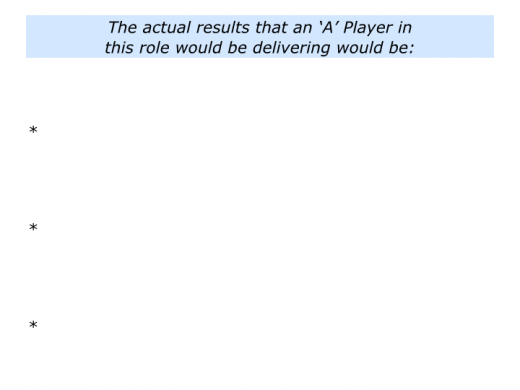
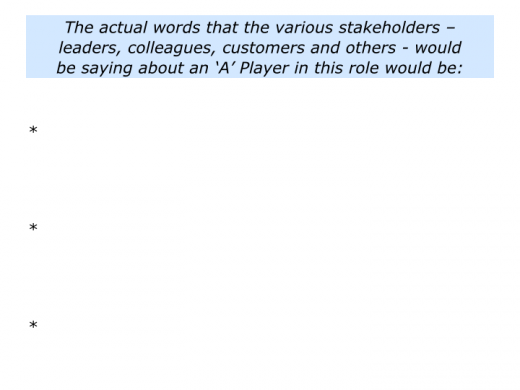

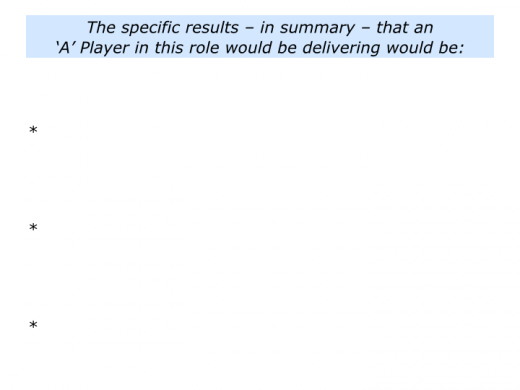
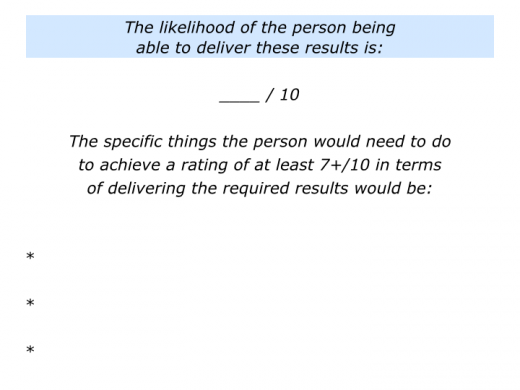


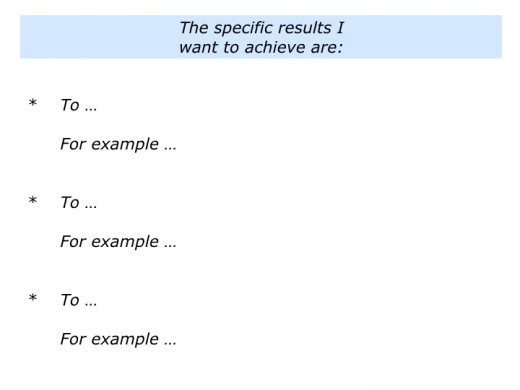

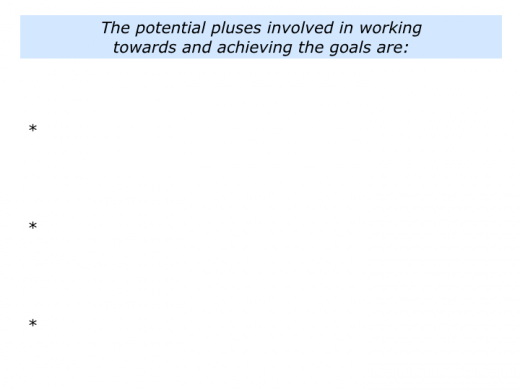
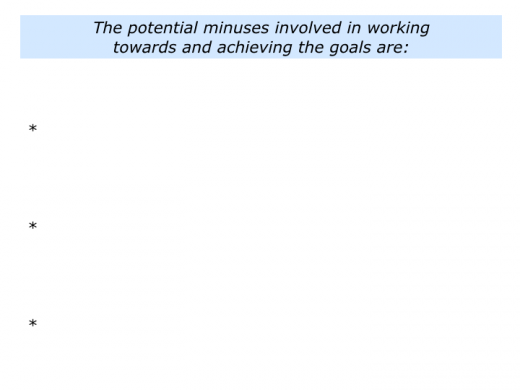

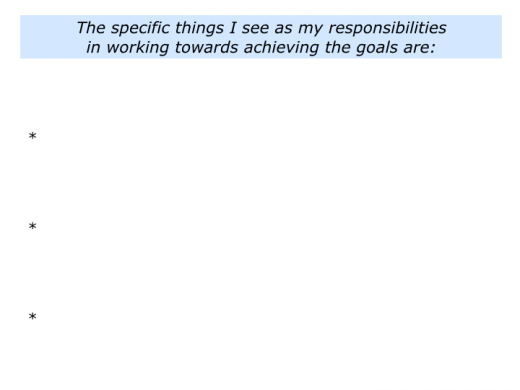
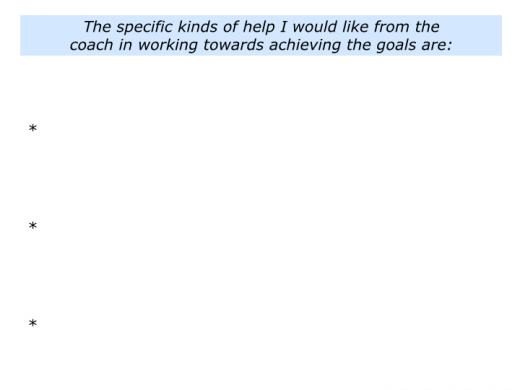

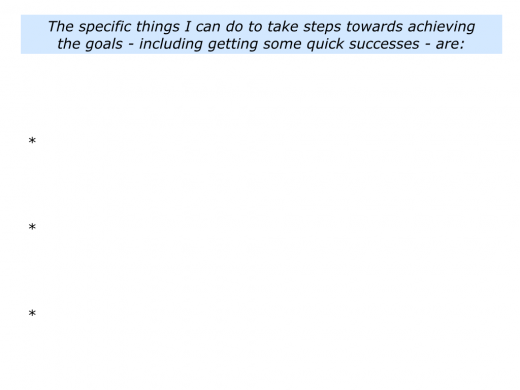

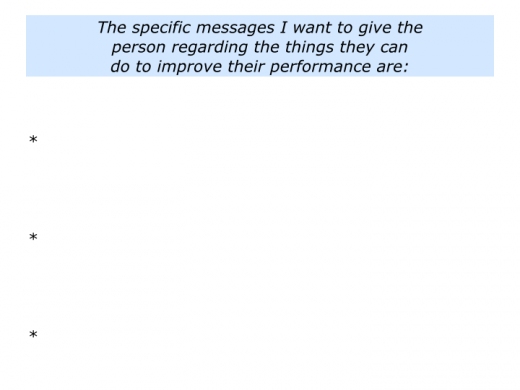
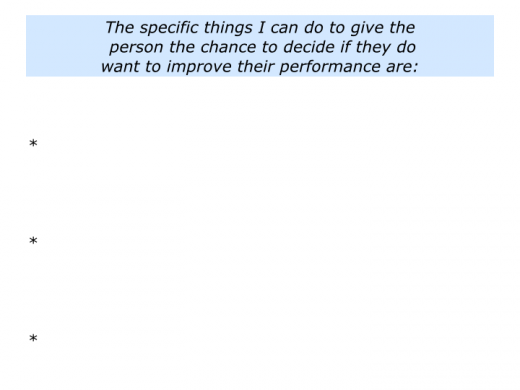




Leave a Reply